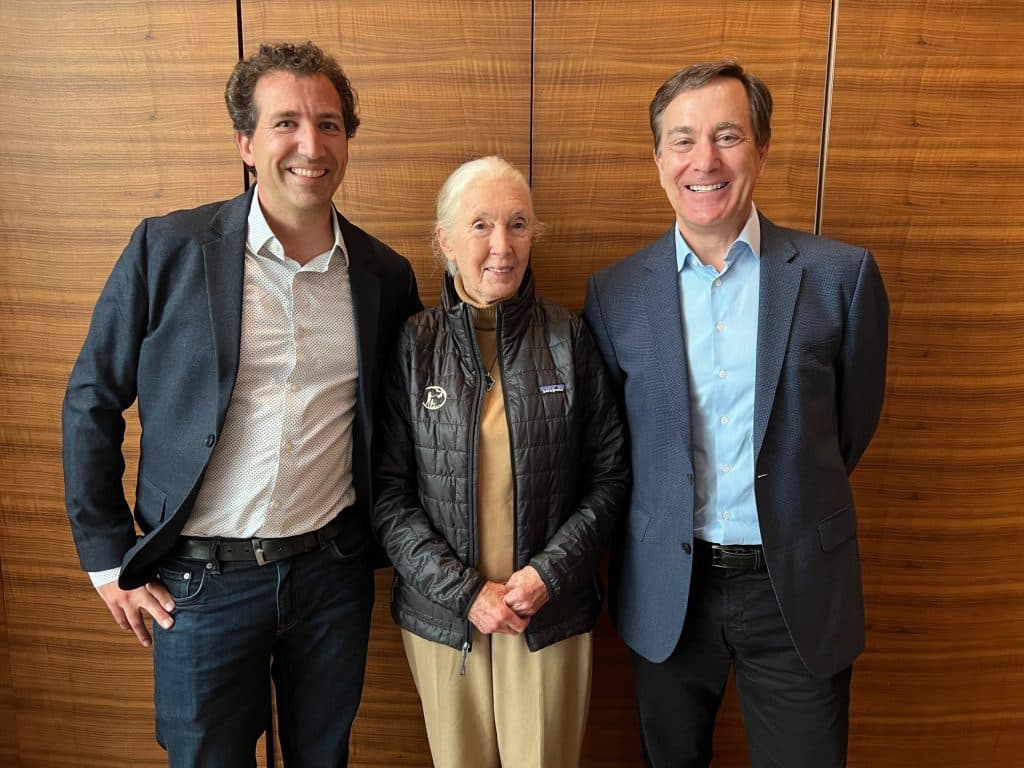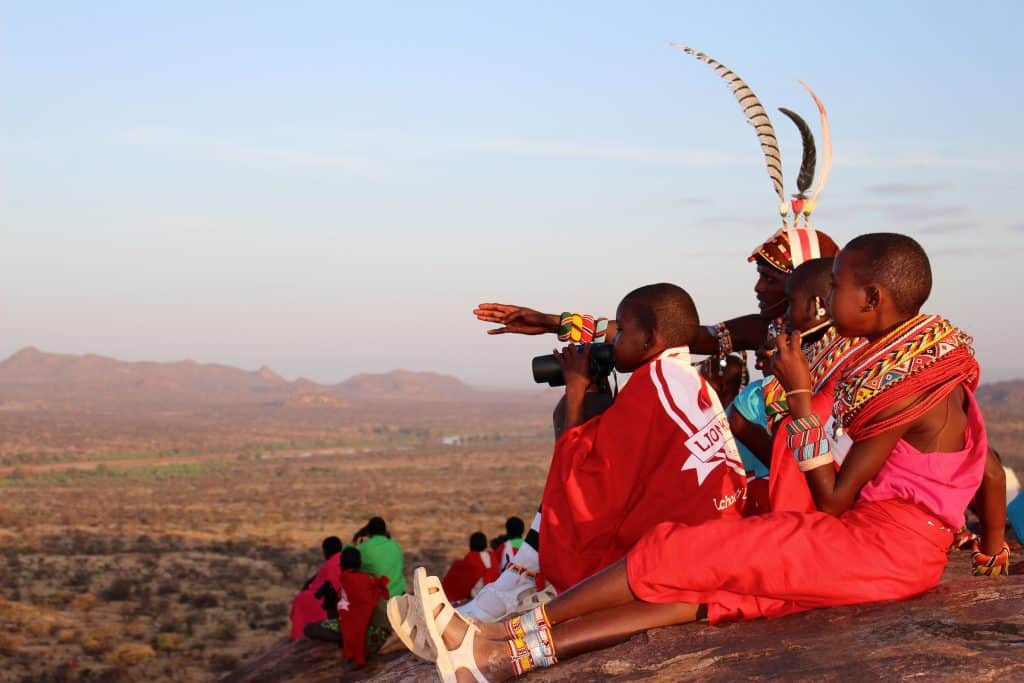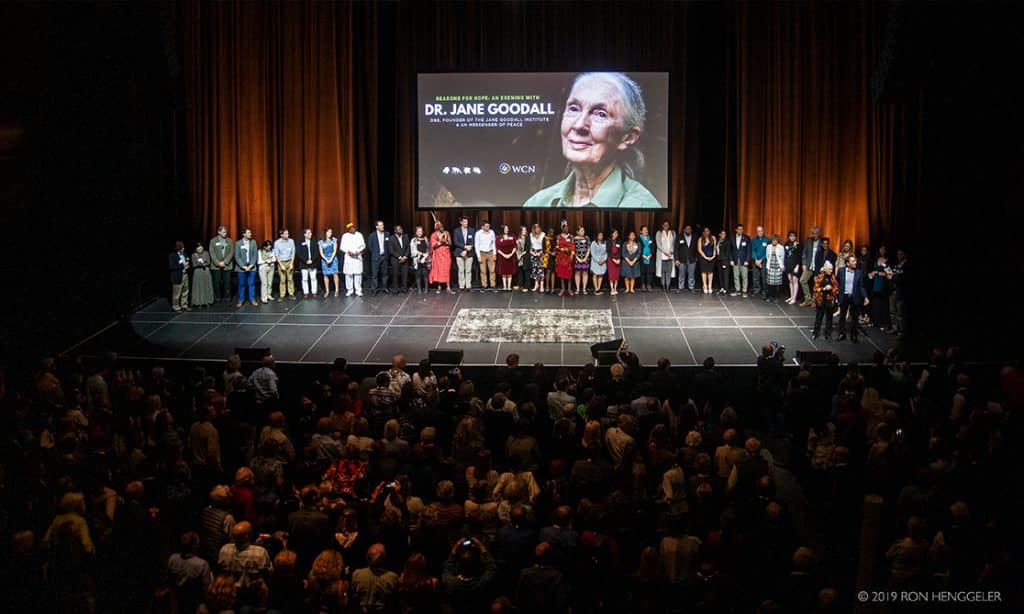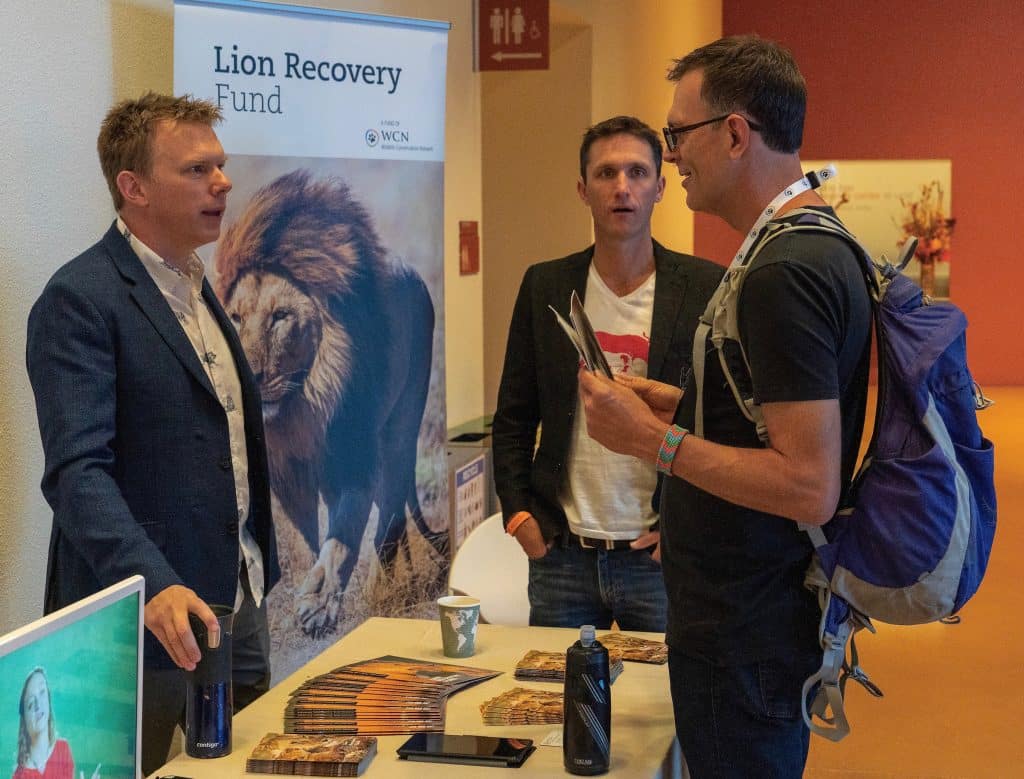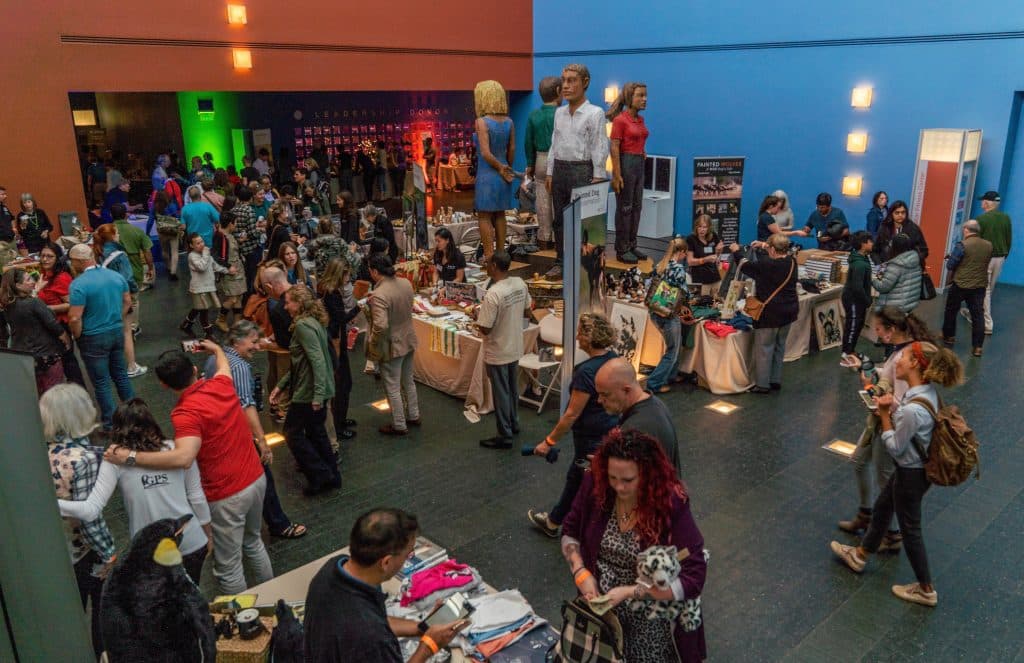In what’s now Tanzania’s Gombe Stream National Park, the 1960s bore witness to a revelation that reshaped our understanding of nature. Dr. Jane Goodall’s pioneering studies on chimpanzees resulted in a scientific breakthrough for the time: humans aren’t the only living being to wield tools.
It’s a revelation that inspired my own path into wildlife conservation; in my childhood, I wrote letters to Dr. Goodall, dreaming of a day when we could meet. Today, as CEO of the Wildlife Conservation Network, I’m honored to call Jane a friend and proud to support the Jane Goodall Institute. When we appeared together on KQED Forum recently, it felt like a full-circle moment—and a humble reminder of how special and interconnected is the world of wildlife conservation she helped pioneer.
Today, Jane will be the first to tell you that her “revelation” in Tanzania wasn’t new at all; indigenous communities, having observed the chimpanzees long before the Western world took an interest, knew all along. The invaluable wisdom of on-the-ground communities, built over generations, was right there, waiting to be revealed to the rest of the world—we just needed to listen.
It’s a lesson that helped inform the decades of community-led conservation that followed. Today, it seems of growing consensus that the success of conservation initiatives hinges on listening to communities on the front lines, who often have invaluable, intergenerational banks of knowledge that would be impossible for any Western nonprofit to emulate. It’s also the best model for how wildlife, in turn, can uplift entire communities.
That’s of growing importance as some of the same corners of the world where conservation is needed most are where communities are in most need of the benefits (and elusive stability) that wildlife conservation can provide. When facing extreme poverty, political conflict, and climate change, it should come as no surprise when many underserved individuals, often left behind by systemic shortfalls, are forced to turn to poaching wildlife to provide for their families. Rather than scapegoating those already suffering, community-led conservation attacks that problem at its root.
By empowering those who once may have turned to poaching as wildlife researchers, scouts, program coordinators, and by funding conservation entrepreneurs to create and lead new programs of their own, conservation can offer a different path forward—and economic stability where it may not otherwise exist. The future of animals and people are inherently and existentially intertwined, and that’s most glaringly apparent at the community level.
That’s why today’s wildlife conservation donors extend beyond just animal lovers. They’re poverty alleviation visionaries. Land acquisition architects. Rural health and education strategists. Women’s empowerment champions. Climate change interventionists. Where films like “The Lion King” helped usher in a generation of donors driven by what we call charismatic megafauna, these donors represent a growing contingency of philanthropists who are driven by media of a different kind—jarring images of refugee crises, political coups, or climate catastrophes. Some may not be inspired by wildlife at all; they want to help people. They simply recognize that investing in wildlife conservation happens to be an incredibly effective way to do just that.
But often, the community-led conservation projects in greatest need may have the least visibility to Western donors. And in the philanthropic world, a lack of visibility all too often results in a lack of funding.
We’re working to change that. At our Wildlife Conservation Expo each year, we offer a stage to conservationists from around the globe who descend on San Francisco to pitch their ideas to an audience of prospective investors. They can invest directly in a single conservation partner, or to broaden their impact, take advantage of our Network’s many species-specific portfolios—Wildlife Funds that have been basketed together to divide resources among multiple projects working toward the same goal, whether that’s saving elephants, lions, rhinos, or the oft-overlooked pangolin. 100% of those species-specific donations go directly to the field.
By minimizing overhead, we maximize our donors’ ability to effectively empower local conservation entrepreneurs wherever they reside. Those donors, once connected to an initiative that they likely never would have discovered on their own, are met with an intimate giving experience (often with a direct line of contact to conservationists on the ground to follow along with the project’s progress).
In a veritable Mecca of the wildlife world, over 50 of these wildlife leaders representing projects working to save critically endangered animals across the globe will be at this fall’s Wildlife Conservation Expo, where they’ll be connected to our Network of investors. On Friday, October 13th at The Metreon, some of those conservationists—flying in from Kenya, Rwanda, and Argentina—will take the stage in front of a wider ticket-holding public to share inspiring stories of community-led conservation initiatives in action.
Those conservationists are the same people who hold the keys to reversing the biodiversity crisis and helping our planet heal. They are the keepers of generations of wisdom, both about the world’s most critically endangered animals and the communities on which they depend for their survival. And they are the people who will inspire the next generation of excited young people to pursue careers in conservation.
Individually, each holds the potential to reveal a new wildlife revelation. Together, they hold the potential to usher in a community-led wildlife revolution.
That’s the real revolution—and it starts with listening.


